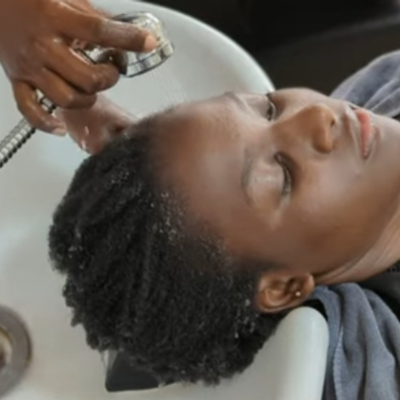- Support 24/7
- +1 (480) 468-4543
- livara@mylivara.com
A Split Decision: Trimming Natural Hair Tips
The Journey of Natural Hair After A Silk Press
November 8, 2023Dermatologists Say That This Surprising Ingredient Can Boost Hair Growth—And Help With Hair Loss
November 10, 2023Keeping natural hair healthy and beautiful is a journey that frequently requires decisions regarding different practices, such as the age-old discussion about trimming. Still up for debate is whether cutting the ends of natural hair is actually necessary or just a matter of personal preference. Let’s dive into the concept of trimming hair ends and why it may be important, especially for split ends.
The Essence of Trimming
1. Split Ends: The Culprit
Split ends are the main reason for trimming the tips of natural hair. These occur when the protective outer layer of the hair cuticle is damaged and begins to fray. The hair cuticle may split into two or more parts, and if left unattended, these split ends can be a gateway to more significant damage, potentially traveling up the hair shaft and compromising the overall health of your hair.
2. Preventing Further Damage:
You are essentially stopping potential damage progression by trimming split ends. Frequent trims can serve as a preventive measure, keeping your hair strong and less likely to break.
3. Encouraging Healthy Growth:
Trimming your ends encourages healthy hair growth. By eliminating damaged ends, you create an environment for new, stronger hair to grow. Beyond improving the overall appearance of your hair (split ends can make hair look dull), trimming split ends also contributes to length retention.
Signs That It’s Time to Trim
1. Visible Split Ends:
If you examine your hair at the tips and find any split ends, it’s a definite indication that trimming is due. While letting go of that little length may be difficult, getting rid of split ends is necessary to stop them from getting worse.
2. Excessively Tangled Tips:
Tangles at the ends of your hair accompanied by dry tips can indicate the need for a trim. Excessive tangling may be a sign of split ends, and this can lead to breakage and loss of hair length. A one time trim may save you loads of hair loss in the long run.
When to Hold Off on Trimming
1. Minimal Damage:
Trimming your hair frequently might not be necessary if it is generally healthy and has few split ends. Instead of sticking to a strict schedule, evaluate the state of your hair and trim it as necessary.
2. Length Retention Goals:
You can adjust your trimming schedule if your goal is to maintain your length. Your goals might be better served by routinely checking for split ends without going overboard with trimming.
3. Protective Styling Benefits:
If you regularly have your hair in protective styles like braids, twists and cornrows, you might not need as frequent trims. Protective styling essentially shields your ends from regular manipulation like combing, which may cause split ends. However, occasional assessments of your ends after unplaiting are still advisable.
The Proper Way to Trim Split Ends
Here’s an easy guide to trimming split ends:
- Clean, dry hair: Start with freshly washed and completely dry hair to better identify split ends.
- Section your hair: Divide your hair into manageable sections for better handling. Work in small subsections within each larger sections for thorough inspection.
- Use sharp scissors: Invest in high-quality, sharp scissors or hair shears to avoid causing additional damage or an uneven look.
- Inspect for splits: Hold each section up and closely inspect in the light to view and feel for split ends.
- Trim conservatively: Ensure to cut only the damaged parts to retain as much of the healthy length as possible.
- Repeat for each section: Carefully repeat this process for each section of your hair to get a proper trim.
- Consider professional help: If you’re unsure of your hair trimming skills, we highly recommend seeking assistance from a professional stylist for precision. The stylists at our Livara Family Salons are highly trained and can readily assist with the task.
- Regular Maintenance: Prevent future split ends with proper hair care practices like moisturizing and protective styling.
The Bottom Line
Basically, cutting natural hair tips is especially important when split ends start to show. In order to stop possible damage from progressing up the hair shaft, this is a necessary move. While the frequency of trims may vary based on your hair’s condition and your individual goals, the key lies in maintaining a balance that ensures your hair stays healthy, vibrant, and free from the danger of split ends.
The frequency of trims may vary depending on your personal goals and the state of your hair. When it comes to cutting your natural hair, pay attention to your hair, observe it, and let its health be your guiding factor for whether to trim or not.
And remember, you are a gem.



